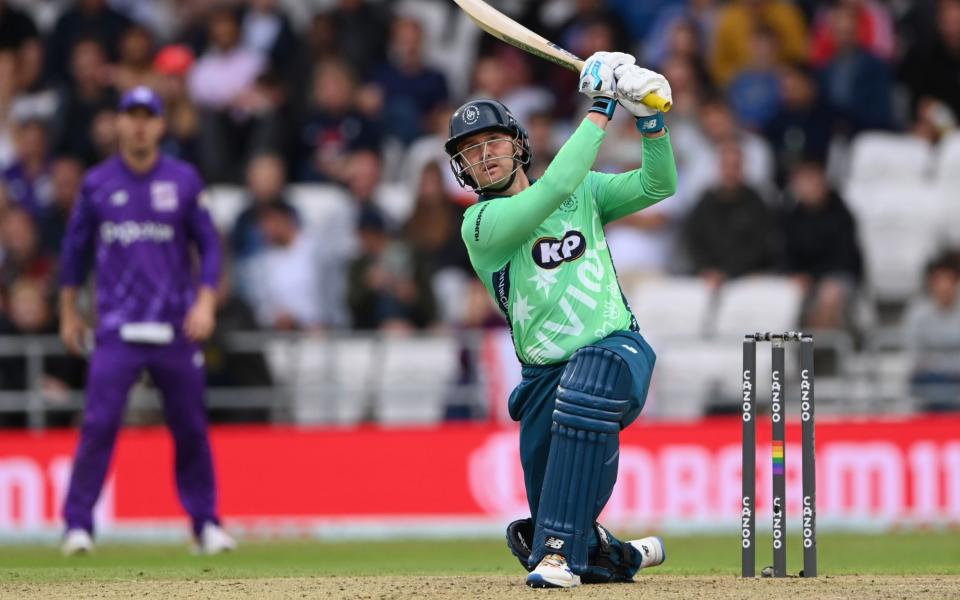'Gladiator cricket' should become unique selling point of the Hundred - here's how it works

One single alteration to the Hundred would turn it into a new and spectacular format of cricket, rather than the confused version of T20 which it is.
If every innings consisted of ten blocks, or sets, each of which had to delivered by one bowler, the format would have an identity of its own.
It would be simple, and the most confrontational version of the game yet devised. It would be brutal, even savage, dog-eats-dog, as the two batsmen strive to take down the bowler. It would be gladiator cricket.
As it stands, the Hundred offers the bowler an escape every five balls. OK, he or she concedes a couple of sixes but they can bail out without too much harm done. If he or she had to bowl a ten-ball block there would be no hiding-place.
Suppose the bowler panics at the sight of Jason Roy going after him, he might bowl a wide or two, or a no-ball. Suddenly his block or set is lasting 12 or 13 balls. Roy latches on to half of them and the bowler is going for 30. Roy at his most devastating might hit 50 off a single set - unless the bowler takes him down first.
The totals would then rise above 200 instead of being lower than T20 totals. Batsmen like Roy would fancy their chances of scoring a hundred, more than once a tournament, on flat pitches. Scores could rise exponentially if bowlers do not stay strong, and improve, and add a new skill - which is the way it has been since the dawn of cricket, with batsmen forging ahead then bowlers having to work out an answer.
At the moment there is only one ten-ball set in an innings on average, usually at the outset, and maybe one later. The rest of the innings consists of five-ball sets, because it is so much easier that way for the bowling side. A few darts, that’s it, over to you, mate.
But this does not lead to much of a spectacle. The Hundred is all action and little drama. The action partly consists of subs running on the field every five balls, bringing on a cap for the last bowler, taking the cap of the next bowler, bringing on a helmet for the keeper, and maybe something for the batsmen, while the fielders change round for the new bowler. It becomes a formless blur for the spectator, whereas for a ten-ball block the stage would be set, the three main actors would appear, and all eyes would be glued to the unfolding drama.
Bowling coaches will immediately say it will be too hard on their charges, and it will be hard, much harder, otherwise they would be bowling ten-ball sets more frequently now. Some will rise to the occasion, others will sink. Some will lose their jobs, others will be paid more. That’s sport, that’s life.
And for the first time in the sport’s history, the bowler would be more valued than the batsman. Anyone who can bowl his or her ten balls for ten runs or fewer becomes gold. They will be like the baseball pitcher, and valued accordingly…. And it’s about time batsmen did not have it all their own way.
Gladiator cricket. Make that the unique selling point of the Hundred. Totals with the growth potential to rise to 200 or 300. A distinct format, savagely simple.

 Yahoo Sport
Yahoo Sport 





































